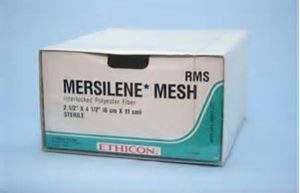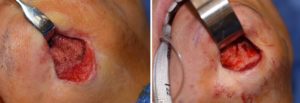Background: Chin augmentation is one of the oldest facial reshaping procedures. It has been performed for over fifty years and just about every conceivable material has been used to perform it. But historically and currently silicone implants have been preferred due to the wide variety of styles and sizes that are commercially available as well as their ease of insertion and removal.
But silicone implants are not perfect as they do not permit tissue ingrowth into them or attach firmly to the surrounding tissues. (depending upon how you view it this can be an advantage as well as a disadvantage) This lack of tissue adherence has allowed the use of a few select biomaterials for chin augmentation that have tissue adherence by virtue of having surface porosity or actual intermaterial porosity

Case Study: This 30 year female had a history of two prior chin implant surgeries. She originally had a small anatomic chin implant which she felt produced inadequate projection and not the desired v-shape to the chin. It was subsequently replaced by a mersilene mesh implant to improve its projection and shape. This second chin implant ended up looking more like a block on the end of the chin and was further removed form the desired chin look.

Mersilene mesh chin implants can be successfully removed with careful technique. Patients should expect more postoperative swelling than the original placement surgery due to the increased tissue dissection needed.
Highlights:
- Despite tissue ingrowth mersilene mesh chin implants can be successfully removed.
- Mersilene mesh material leaves impressions in the bone like every other type of chin implant.
- The shape options in mesh style implants are limited and can be the reason for chin implant replacement.
Dr. Barry Eppley
Indianapolis, Indiana



